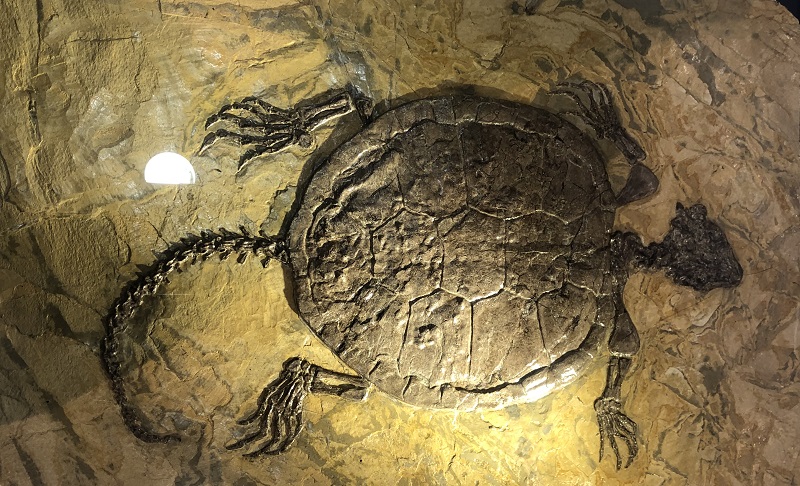BH Staff | September 11, 2022
Age and Locality: Early Cretaceous, Liaoning Province.

Manchurochelys is a genus of extinct turtles that lived during the Early Cretaceous period, approximately 125 million years ago. This genus is part of the family Sinemydidae, which includes a variety of ancient turtles known for their distinctive shell shapes and sizes. The fossils of Manchurochelys have been primarily found in the Yixian Formation in Liaoning Province, China, a site famous for its well-preserved fossils from the Early Cretaceous, providing valuable insights into the ecosystem of that era.
Manchurochelys is notable for its relatively small size compared to some contemporary turtles, with a carapace length that could reach up to around 20 centimeters (about 8 inches) in some species. The shell of Manchurochelys is moderately broad and oval-shaped, with a smooth surface. Its physical characteristics, such as the structure of the shell and the arrangement of scutes (the external plates covering the shell), are important for distinguishing it from other turtle genera.
The lifestyle of Manchurochelys, like many other turtles of its time, is presumed to have been semi-aquatic, living in the freshwater environments of lakes and rivers within the ancient landscapes of what is now northeastern China. Its diet likely consisted of aquatic plants, small fish, and possibly insects, similar to the diet of modern freshwater turtles.
Manchurochelys contributes significantly to our understanding of turtle evolution and the biodiversity of the Early Cretaceous period. Its discovery, along with other fossils from the Yixian Formation, offers a snapshot of life in a rich and varied ecosystem that existed millions of years ago, providing crucial evidence for the study of ancient reptiles and their environments.
